Today, in the App Store and Google Play, you can find many projects in the match-3 genre. Only some rise in the box office top, while others remain unnoticed. How to make such a “three-in-a-row” that will bring money, we talked with the authors of the game “Mysteries of Atlantis”
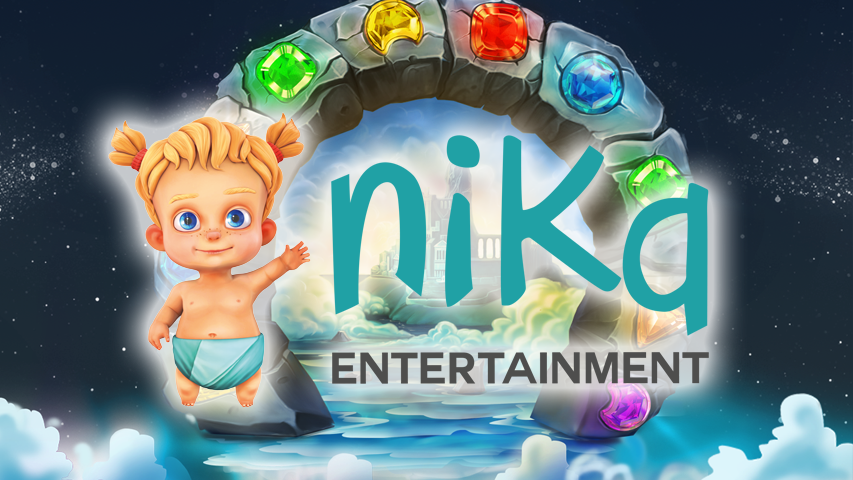
To the questions App2Top.ru Viktor Trukhnov, General Product Manager at Nika Entertainment, was responsible.

Victor Trukhnov
Hi! Look, if the team starts working on a new project based on the original mechanics, where the development should begin, in principle, it is clear: we are writing a concept. But if you decide to make a game based on popular mechanics, where to go, where to start your journey?
Start with traditional marketing: carefully study and analyze competitors. Determine what your advantage will be, how you will differ from others, and what new things you can offer the user. There is only one commandment here: differentiate or die. To work in a popular genre is to play big. The competition is fierce, and the price of error is too high here. Only those who can find a unique approach and stand out among a large number of similar products will win.
After market research, the developer will have to test his theories in practice. In fact, this is quite simply implemented through prototyping. We check a dozen statements before choosing a successful main or side mechanics for the product.
What do you use to make your games (own engine/third-party)? Why?
Our flagship project “The Mysteries of Atlantis” was initially focused only on the social platform, so we did it on Flash. But then, for a multiplatform solution using Adobe Air, we moved it to the Starling Framework. In this case, Adobe Air and Starling environments are the right choice. And Nika Entertainment has its own engine.
The rest of the projects also continued to be done on Starling, as there was accumulated experience. But still there are still quite a lot of pitfalls. This fundamentally does not suit us as people guided by the principles of time to market. In this regard, we are actively starting to look towards Unity, although we are well aware of the risks associated with a fairly low distribution of the plugin of the same name in social networks.
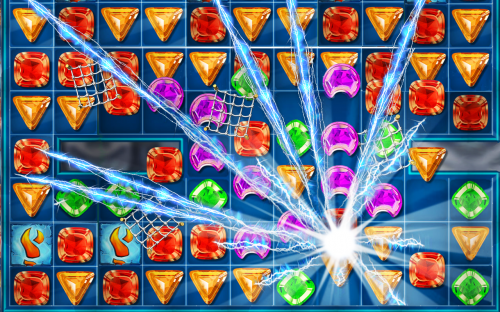
The Mysteries of Atlantis
In addition to the engine, of course, there should be an editor. How much time do you spend on its creation, what principles should it comply with?
It all depends on the product. Basically, we stuff the editor with basic functionality. If you look at the experience of our casual products, then the basic list is quite small – the mode of editing and filling the playing field, level design, elements, basic functions for these elements. On average, three days are allocated for the technical task for the basic editor, and it takes about a couple of weeks to develop the editor. And I can safely say that this is only 30% of the work with the editor. After the “blank”, the level designer is included in the work. He prepares powerful technical specifications for patches for the editor in order to balance the game qualitatively. There are many functions for auto-play, generating hundreds of games, viewing randomness (if such is set in the level concept), new designs of level elements, new gameplay conditions. Everything is really very customized with us – any editor is cut exclusively for a level designer.
Many, I am sure, are also concerned about the issue of building algorithms for the departure of chips. Do they depend on how well the user is playing, on the style of the game?
You, as a developer, must control the gameplay at all stages so that the player arrives at the time of payment at the moment you need. It is algorithms that in most cases provide balance and variations in complexity.
Such algorithms are the know-how that allows us to talk about the uniqueness of the balance sheet and our products as a whole. Naturally, I cannot tell you all the details, but I will point out the obvious facts in order to reflect.
The first such fact is that men and women play differently, this should be taken into account when the algorithm is triggered. The second fact is that it is definitely worth considering the case when this level simplification/complication algorithm should turn on. The developer needs a very powerful tool for analyzing levels and understanding in general where to put paywalls in order to monetize these levels. So, if you turn on the algorithm without analyzing the basic complexity, there is a huge risk of bringing the complexity of the game to an uncontrolled process. The third, and perhaps the most important fact is that such an algorithm should by no means be obvious to the user. It is HIGHLY undesirable that two identical levels with different conditions for passing appear in the gaming community.
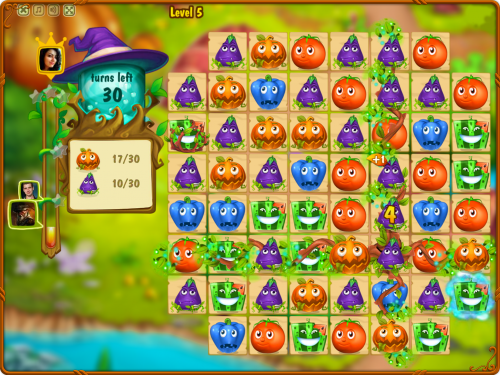
Magic Kitchen
On what principle is the difficulty of the levels built?
First, it is necessary to entice the user with the game itself and its capabilities, to encourage the first successes. Create a “greenhouse environment” in which the player will get used to and feel the pleasure of the process. And then you have to alternate difficult and simple levels, paying attention mainly to the number of losses and the proximity of the user to victory at each attempt. Sometimes other indicators are used, but they affect, rather indirectly than directly. The report of Florian Steinoff from Wooga at GDC 2014 in San Francisco, which confirmed some observations of the players, was very useful for us. He claims that users need to be angry, but do it wisely. Let them lose, so that they treat the game with due seriousness, test them for strength, let them lose almost at the goal. And when they get really angry, they will have a carefully calculated luck. The long-awaited victory will be credited to the players. Give a couple of easy enough levels to enjoy the victory and share it with your friends. Make them believe that the beautiful combo that helped them pass the already seemingly lost level is a miracle or a skill of the player.
Did the level balance change during the game (and how many times approximately)? Why? What did you leave and what did you come to?
The balance can change constantly. It is extremely important after the release to inspect the entire stream of players by levels (the so-called watering can), look at the drop and instantly edit. Keeping your finger on the pulse in the first week after the release is a mantra for every developer. Then everything becomes a little easier – each location is regulated depending on different factors – successfully conducted AB testing, successfully launched levels on another platform, feedback from users and focus groups. It is important to do this point-by-point and be loyal to the players
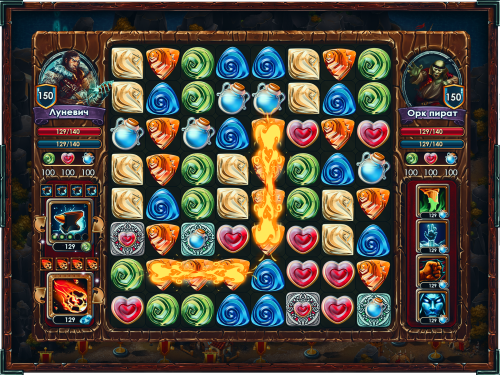
Crystal Lords
Are there any observations in terms of which levels users like the most (levels for time, for moves)?
It is difficult to give an unambiguous answer to this question. In a good game, everything should be balanced so as not to overload the user with monotony. If the level designer makes interesting, addictive levels of different types, then the task of the game designer is to assemble them into such a harmonious mosaic, where there will be no distortions in either direction, and the user will not get bored playing. Again, it depends on the audience. If you are doing casual puzzles, and most of your users are adult women, it would be wiser to reduce the number of levels for a while, they don’t particularly like them.
How does the difficulty of passing levels affect the retention and monetization of users?
This question can be answered by a set of axioms. If the level is too difficult, we see a huge drop of players and a little more monetization of the level, if it is too easy, the picture is diametrically opposite. It is important to keep a balance of complexity and monetization. For us, an acceptable option is simpler levels with less monetization. We don’t try to monetize players from the start, we do it later when they are more loyal to the game.
If the player always feels that he can pass the level, only a little luck and skill are needed, then you are on the right track. You prepare the player with simple levels, gradually complicate, then plateau out of BuildUp levels on the way to a difficult level that can even make you mad. And then the player will have to part with the accumulated boosters or try his luck again. You have to hurt his ego, but instill faith in luck, no compulsion. If you engage the player correctly, and he has a strong motivation to complete the level, even if seasoned with anger, he is yours.
And another very important point – you can not skimp on items that will help the player in passing. This has a very strong impact on players from the Russian-speaking network, who got used to freebies a long time ago. Of course, this does not mean that you need to unload a bunch of coins to them, but nevertheless they should not have a feeling of insurmountable levels. This way you will earn a loyal audience, monetize progress at further levels and save nerves without reading reviews about the greed of developers.
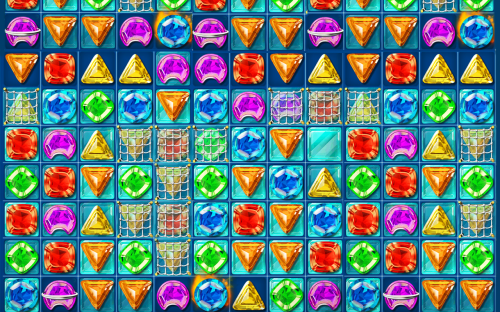
At what point during the passage of the level is it best to “put pressure” on the user so that he acquires something?
This is the art of level design. You have to challenge the player, which he will not be able not to answer. A perfectly constructed level is when there is only one move left before victory. Are you familiar with this feeling of excitement and sports anger? The victory is almost yours, there is just a little bit left. And this “almost” and “just a little bit” is the essence of the level designer’s work. You do not force the player to make a purchase, it is so insulting to him to quit what he started that he takes the missing booster or an additional move. Who will turn back at the finish line?
What are the most popular IAPs? Which IAPs bring in the most money?
Regarding match-3, this picture changes little by project. The most popular IAP with us is the purchase of 5 moves in the prefail.
Thanks for the interview!
